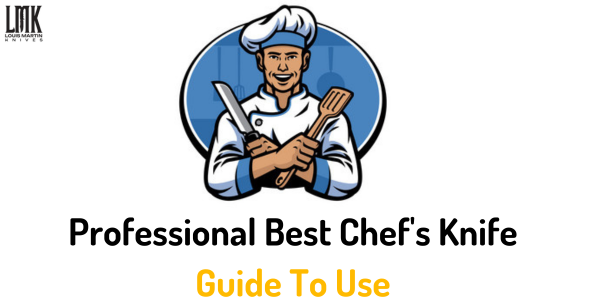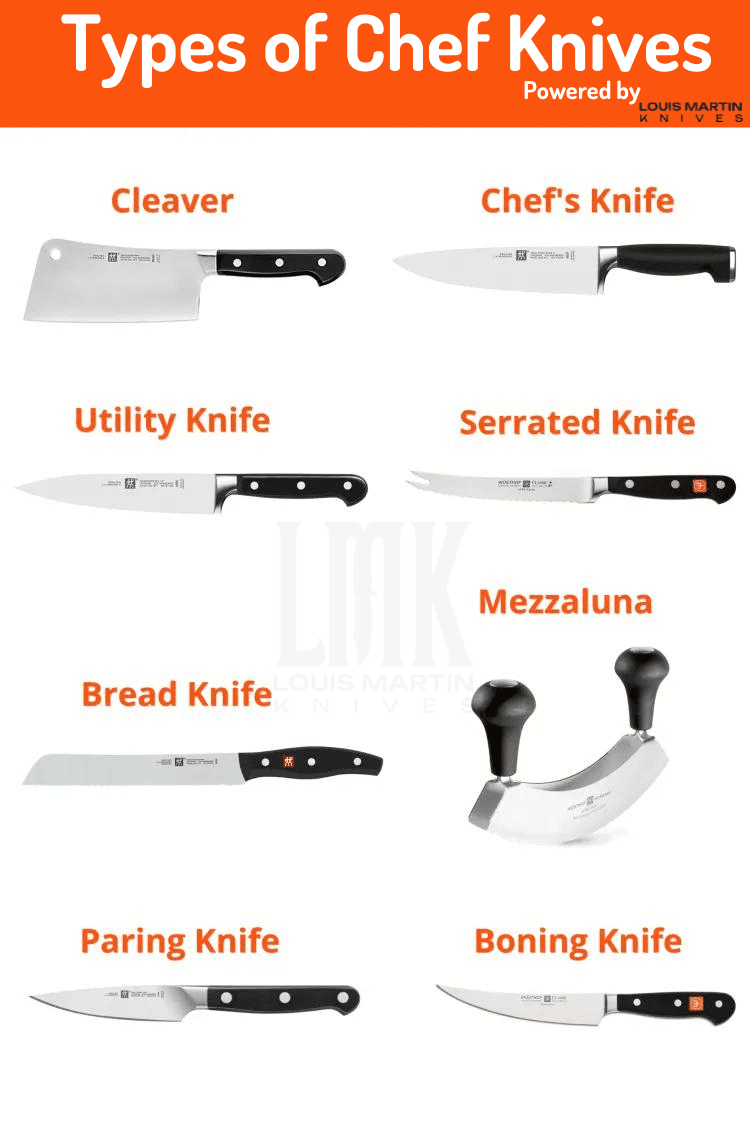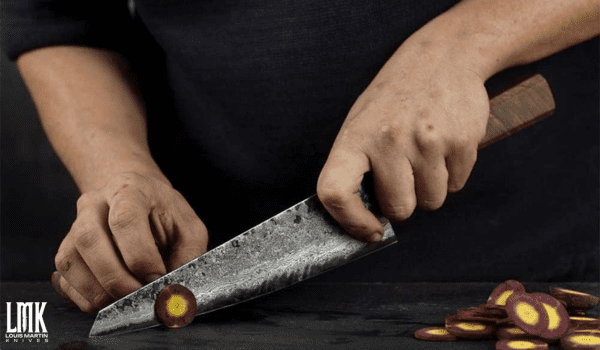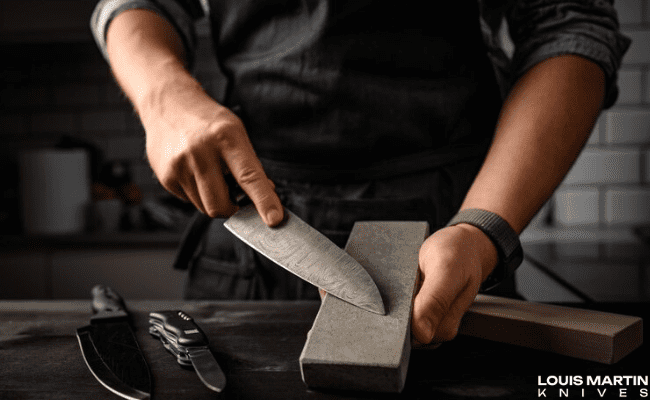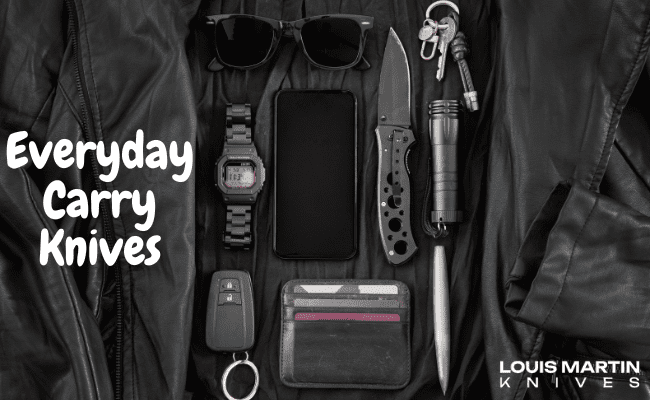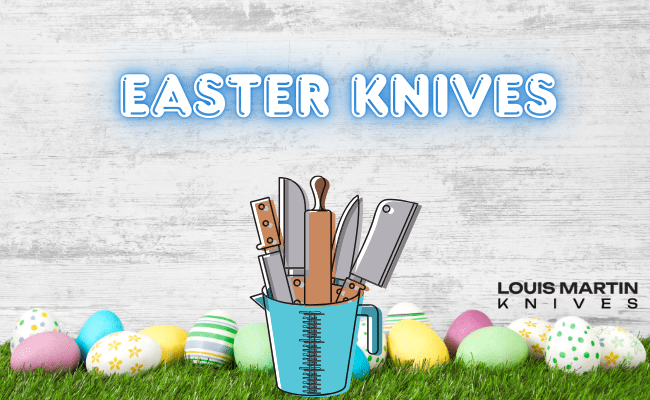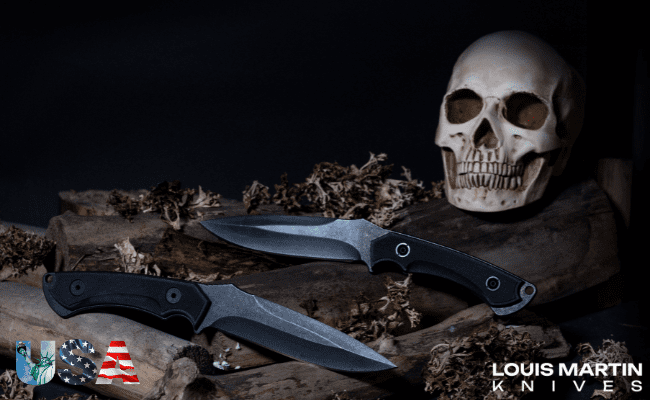Welcome to the ultimate guide to chef knives! A chef’s knife is the backbone of the kitchen. So whether you’re a culinary pro or just starting out, this guide is for you. We’ll break down the types of chef knives, how to use them, and how to take care of them. Stick around for top-notch recommendations too. Don’t forget to check out handmade knives for the latest and greatest in kitchen chef essentials!
Why a Good Chef’s Knives Matters
If you think all knives are created equal, think again. The chef knife will do more than just slice and dice. It becomes an extension of your hand in the kitchen. It’ll make food prep a breeze and even take your cooking skills to the next level. With the right knife, you will be chopping like a Michelin-star chef in no time!
Types of Chef knife
When you walk into a kitchen store, the array of knives can be overwhelming. But if you’re looking to step up your kitchen game, understanding the different types of chef Knives is key.
French Chef Knife
The French chef knife is a solid all-rounder. You can use it to chop, slice, and mince. The blade is a bit curved, letting you use a rocking motion when cutting.
German Chef Knife
Then there’s the German chef knife. It’s more robust and generally heavier. Great for tasks that require a bit more muscle like chopping bones. But if you’re into sushi or fine slices, Japanese knives are the way to go. Santoku and Gyuto hunting knives have thinner, sharper blades perfect for precise cuts.
Specialty knives
Specialty knives like paring and boning knives are also essential. The paring knife helps in peeling and slicing small fruits. A boning knife, on the other hand, is great for deboning chicken or fileting fish.
Anatomy of a Chef’s Knife
Every part of a chef’s knife has a role to play.
Blade: The star of the show. Its shape and sharpness define how well it’ll cut.
Handle: Determines how comfortable you’ll be during those marathon meal preps.
Tang: The unsharpened part of the blade that extends into the handle. The longer the tang, the more balanced the knife.
Edge: The sharpest part of the blade. This is where the magic happens.
Materials and Construction
Material And Construction
You are holding a knife and you feel the handle slipping. Not ideal right? Let’s dig in. Two popular materials dominate the blade scene: stainless steel and carbon steel. Stainless steel is rust-resistant and durable. Carbon steel, on the other hand, can hold an edge longer but it rusts more easily.
How these knives are made
Forged knives are created from a single piece of metal. They’re generally heavier and balance is better. Stamped knives are cut from a sheet of metal. They’re lighter but might not offer the same balance.
Handle Material
The handle shouldn’t be overlooked either. You’ve got options like wood, which offers a classic look. Plastic handles are easier to care for. But no matter the material, comfort is crucial.
When hunting for the best chef’s knife or best chef knife, keep these factors in mind. The material and construction are more than just buzzwords. They can make or break your cooking experience. So when you’re ready to make that all-important decision, check out our brand.
How to Choose the Right Chef’s Knife
Considering the length, weight, and handle comfort is key. Don’t forget to also think about your budget. A pricier knife isn’t always better for beginners, and budget options can be reliable too.
How to Use a Chef’s Knife
A brand new chef’s knife. Owning a great tool is only half the battle. Knowing how to use it makes all the difference. Hold the handle and pinch the blade between your thumb and index finger. This gives you more control.
Cutting techniques. For chopping, make sure the tip of the knife stays on the cutting board. Lift the handle up and down in a rocking motion. When you’re dicing, cut the ingredients into strips first. Then turn them 90 degrees and chop to create cubes. Mincing? But cut the cubes smaller.
Safety is a big deal too. Always cut on a stable surface. And keep those fingers tucked in like you’re holding a golf ball. This way you won’t nick your fingers.
Maintenance & Care
Maintenance Sharpening: Use a whetstone or a honing rod. Electric sharpeners are good too but they can be a bit rough on the blade. Sharpness equals safety and efficiency in the kitchen.
Cleaning: Soap and water by hand are your best bets. Dishwashers can be blade bullies, causing nicks and dullness. After washing, pat it dry right away. This stops water spots and guards against rust.
Storage: A knife block or magnetic strip is ideal. No more rummaging through a drawer full of utensils and risking finger cuts. Proper storage extends blade life and keeps the edge keen for longer.
Conclusion
The right knife can make food prep a breeze and improve your skills in the kitchen. So next time you need a knife, check out our custom knives for quality and variety.
So there you have it. Now you know all about chef knives and why having a good one changes everything. Ready to make an investment in your cooking? Don’t miss our top picks for the best chef knife. Take your culinary game to the next level. Trust us, your future meals will thank you.
FAQs
- What is the best beginner-friendly chef’s knife?
- Something that is lightweight and has a comfortable handle.
- How often should I sharpen my chef’s knife?
- Depends on use but usually every few months.
- Is stainless steel or carbon steel better?
- Stainless steel is low maintenance while carbon steel retains its edge longer.
- Where can I buy a reliable chef’s knife?
- Either specialized kitchenware shops or reputable online platforms.
- Is it worth investing in a high-end chef’s knife?
- If you’re passionate about cooking, a high-quality chef’s knife is a long-term investment worth making.
